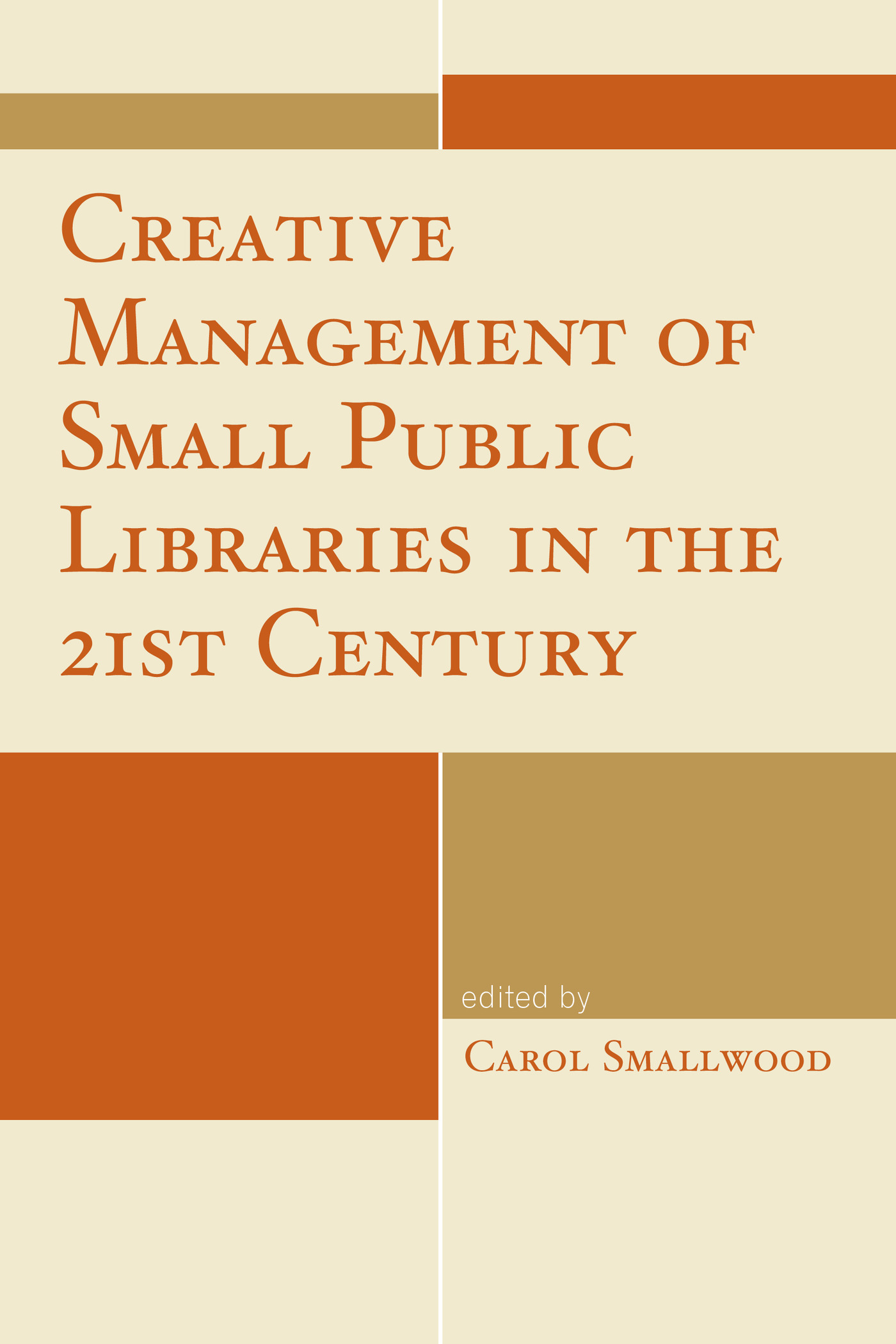Creative Management of Small
Public Libraries in the 21st Century
Creative Management of Small
Public Libraries in the 21st Century
Edited by Carol Smallwood
ROWMAN & LITTLEFIELD
Lanham Boulder New York London
Published by Rowman & Littlefield
A wholly owned subsidiary of The Rowman & Littlefield Publishing Group, Inc.
4501 Forbes Boulevard, Suite 200, Lanham, Maryland 20706
www.rowman.com
Unit A, Whitacre Mews, 26-34 Stannary Street, London SE11 4AB
Copyright 2015 by Rowman & Littlefield
All rights reserved. No part of this book may be reproduced in any form or by any electronic or mechanical means, including information storage and retrieval systems, without written permission from the publisher, except by a reviewer who may quote passages in a review.
British Library Cataloguing in Publication Information Available
Library of Congress Cataloging-in-Publication Data
Creative management of small public libraries in the 21st century / edited by Carol Smallwood.
pages cm
Includes bibliographical references and index.
ISBN 978-1-4422-4355-2 (cloth : alk. paper) ISBN 978-1-4422-4356-9 (pbk. : alk. paper) ISBN 978-1-4422-4357-6 (ebook)
1. Public librariesUnited StatesAdministration. 2. Small librariesUnited StatesAdministration. 3. Public librariesAdministration. 4. Small librariesAdministration. I. Smallwood, Carol, 1939, editor.
Z678.C758 2014
025.197473dc23
2014028355
 TM The paper used in this publication meets the minimum requirements of American National Standard for Information Sciences Permanence of Paper for Printed Library Materials, ANSI/NISO Z39.48-1992.
TM The paper used in this publication meets the minimum requirements of American National Standard for Information Sciences Permanence of Paper for Printed Library Materials, ANSI/NISO Z39.48-1992.
Printed in the United States of America
Foreword
The public library is a key part of the global marketplace of ideas. But ideas start locally and the success of the public library is built upon its recognition of and connection to community. The three pillars of library serviceinformation, education, and entertainmentmust reflect a local communitys interests and sensibilities if that community is to fully embrace, sustain, and grow public library services.
Libraries have traditionally been valued for the contributions they make to the community; however, we know that the relationship between the community and the library is based more on reciprocity than a one-way transfer of value. Communities contribute to libraries through volunteerism, financial support, advocacy, and, in some cases, sweat equity. It is through those shared contributions that the library and the community co-create the most compelling, relevant, and valuable service.
If the library is to truly be embedded in the community, then its director, staff, and board must make customer relationships a number-one priority. Libraries serving populations with fewer than 25,000 residents have a unique opportunity to connect directly with the individuals and groups that comprise the community. These relationships provide the library with powerful insights into the needs and aspirations of the community as a whole and enable the library to develop a resonant strategy.
Creative Management of Small Public Libraries in the 21st Century provides the tools to lead a local public library with relevant and successful services. It shares a commonsense approach to providing a small (in staff size or budget) but mighty (in impact and outcome) public library service. By turning the service delivery team outward to the community with enthusiasm and positive energy, it is possible to achieve significant results. Many chapters summarize best practices that can serve as checklists for the novice library director or as a review for the more seasoned manager working through new responsibilities. Chapters are tactical, focusing on specific issues for managers such as performance evaluations, effective programming, or e-reader services. The content acknowledges the issue of time management in a small or rural public library as well as the challenges associated with managing Friends and volunteers. Readers of this warm and upbeat guide will know that they are not alone.
While most public libraries do not have the resources to satisfy customer expectations for instant gratification, ultra-convenience, and state-of-the-art technologies, the profession has always responded with top-notch customer service. The authors of the many chapters in Creative Management of Small Public Libraries in the 21st Century recognize that great public libraries move beyond customer service to meaningful customer relationships. I believe that this volume will make an important contribution to the literature by reminding us that public libraries transform communities of every size. In fact, never before has the role of the public library been a more crucial thread in the fabric of community life.
Sari Feldman,
executive director of Cuyahoga County Public Library in Ohio
and president-elect of the American Library Association, 20142015
Preface
Creative Management of Small Public Libraries in the 21st Century is an anthology addressing small public libraries as centers of communities with populations under 25,000, which comprises most of the public library systems in the United States. It contains a wide selection of topics from contributors with varied backgrounds, reflecting the diversity of small public libraries. The thirty-two chapters are arranged into the following parts: Staff, Programming, Management, Technology, Networking, Fundraising, and User Services.
The Library Services Act of 1956 (coming before the Library Services and Technology Act) was enacted in part to improve the role that public library services play in rural areas. Nongovernmental agencies have also recognized the important role they play in their communities; the Bill and Melinda Gates Foundation, for instance, has played an important part in securing public libraries place as community computing centers.
Despite tight budgets and technological challenges, services in small and rural public libraries continue to serve and reach their communities: through creative management, small libraries prove their resilience and continued relevance. A general observation is the smaller the community, the more important these libraries are to their patrons.
Acknowledgments
My thanks to the thirty-six dedicated librarians who have shared with colleagues. It has been a pleasure working with these professionals dedicated to local community service. A special thanks to Lawrence Grieco, library director of Gilpin County Public Library, Black Hawk, Colorado, for suggesting this anthology and supplying the cover photo, and to Sari Feldman, ALA president-elect, for graciously writing the foreword. Thanks also to:
Linda Bostrom, Public Library Association, American Library Association
Donna Brice, vice president and president-elect of the Association for Rural and Small Libraries, Inc. and library director of the Eastern Lancaster County Library, New Holland, Pennsylvania
Vandella Brown, contributor to Mentoring in Librarianship
Lisa Fraser, services implementation coordinator, King County Library System, Washington
Vera Gubnitskaia, youth services manager, Orange County (Florida) Library System
Kerol Harrod, librarian, Denton Public Library, Denton, Texas
Next page






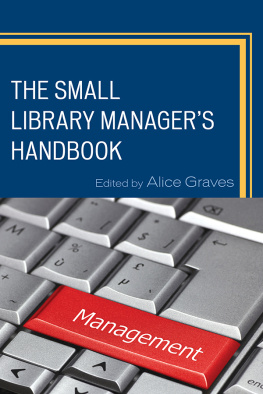
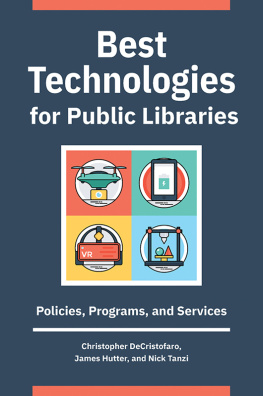



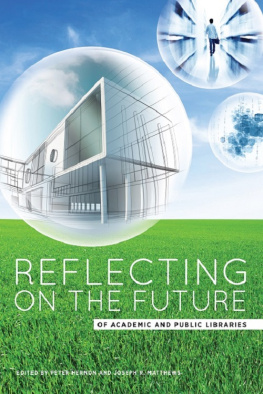
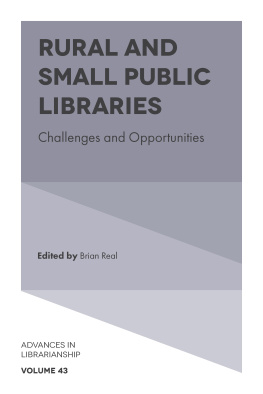
 TM The paper used in this publication meets the minimum requirements of American National Standard for Information Sciences Permanence of Paper for Printed Library Materials, ANSI/NISO Z39.48-1992.
TM The paper used in this publication meets the minimum requirements of American National Standard for Information Sciences Permanence of Paper for Printed Library Materials, ANSI/NISO Z39.48-1992.